I don’t seem to plan to give birth anymore, although I’m not going to promise, so as not to jinx it. Well, that is, I would give birth to many more times with great pleasure, but I’m not ready to nursing babies yet. I just received a compliment that they say there is so much information around, and you can state it briefly and clearly.
I’ll write now in fact - a lot of information has been shoveled, I don’t have a habit of simply accepting postulates on faith, not understanding why this is how it works. And being a very passionate supporter of natural birth and an even more passionate opponent of prevailing obstetric approaches, especially in Russia, I understand that half of the problems for mothers who, in principle, would like to give birth to their baby naturally, could be avoided if the necessary information were accessible and understandable . So I'll try, maybe someone will come in handy.
I’ll write a disclaimer right away: I’m not campaigning. The woman’s body belongs only to her, and she chooses how and what to do, whether or not to believe the doctors, and if you believe, then how much to check. Natural childbirth does not abolish common sense in assessing risk factors, but most risk factors are overrated, mistaken, or invented for the convenience of managing the hospital system.
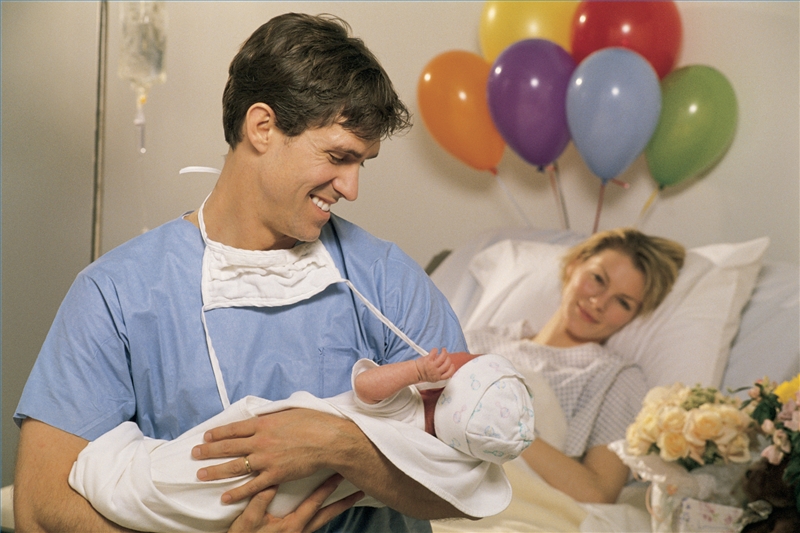
100 did not work, it turned out 69 facts about childbirth that you should know. Those interested can add:
- Childbirth is a natural process triggered by a mechanism in a woman’s brain. Doctors still have no data that triggers delivery, so their attempts to intervene in this are at least unprofessional.
- The sooner they intervene in your birth, the greater the chances of a deplorable outcome, this is similar to the domino effect.
- Artificial acceleration of childbirth carries a SEVERE risk of birth injury for the mother and baby. In addition to the child entering the birth canal, an enormous and smooth work is going on in the body to prepare the muscles of the pelvic floor, soften the cervix, dilute the pelvic bones, and so on. Accelerating the exit of the fetus is dangerous because the baby is artificially pushed through the unprepared birth canal.
- Any interventions, as a side effect, have an additional risk, as ascertained by medicine, which requires forced observation.
- In turn, forced observation (electrical monitoring, vaginal examinations) is harmful to the development of labor and inhibits it.
- Fetal monitoring requires lying on your back, which is the least physiological posture for childbirth.
- In the absence of intervention, fetal electrical monitoring is not needed. The midwife can get the same information by listening to the mother’s belly with a special device. He is needed not by a woman in childbirth, but by doctors, in order to bother less and not to observe several women in labor personally.
- Labor activities, especially in a first-born woman, can go at any pace, accelerate and slow down. A few hours of labor and a stop until the next day are normal, the body is preparing.To calm conscience, you can listen to the heart of the child, and confirm that everything is fine with him. Childbirth is NOT OBLIGED to happen in a certain rhythm, speed.
- When opening 5 cm, the phase of maximum tension (pressure of the head on the neck) sets in, and the sensation “pushes”. This should be done carefully, listening to your body - then the disclosure from 5 to 8 cm can go very quickly.
- In medicine, it is customary to consider the phase of maximum tension 4-8 cm, and without observing the rapid progress of 4 cm, an incorrect diagnosis is made of weak labor. Meanwhile, progress begins only by 5 cm, and hospital protocols are incorrect.
- At 8 cm, it can begin to tighten strongly, and you need to follow your body carefully. Usually at 8 cm, many want to lie down and rest, or vice versa get on all fours - to help the final disclosure. This is normal.
- At the first birth, there is a period in the effort phase when it seems that the effort does not bring results. At this time, jewelry work is underway to fit the baby's head to the birth canal of the mother. This is often diagnosed as “weakened labor” and begin to intervene. It is necessary to let nature do its job, the head usually then appears suddenly. The process of passing the child through the birth canal is non-linear.
- With the onset of labor, no matter what its rate of development, if the condition of the child is normal, a puncture of the bladder is unnecessary and dangerous. The risk of infection after a puncture is higher than after a natural waste of water.
- Puncture of the bubble is designed to accelerate childbirth. The acceleration of childbirth is a dangerous and harmful process - see paragraph 3.
- Puncture of the fetal bladder: in addition to the possibility of an umbilical cord falling out, which is dangerous for the development of acute hypoxia in the fetus and emergency CS, it is also dangerous for the fetus to develop transient acidosis and hypoxia, the risk of compression of the present part of the fetal head increases.
- An anhydrous period of 24 hours (with natural water withdrawal), with the absence of temperature in the mother, is considered to be RISK-FREE in the west. An anhydrous period of 24-48 hours requires regular monitoring of the mother’s temperature and the fetal heartbeat, but is normal, usually childbirth begins during this period in a natural way. Data on a period of more than 72 hours are not available, because by this time everyone is giving birth.
- The child DOESN'T CAPTURE in the anhydrous period, the placenta continues to produce amniotic fluid.
- The danger of an anhydrous period is only an infection, which is controlled by measuring the temperature in mom. Vaginal examinations increase the risk of infection.
- Chemical intervention in childbirth (induction, stimulation with oxytocin) violates the natural hormonal chemistry of childbirth.
- Oskitocin, produced during childbirth and feeding, triggers and promotes labor, and then the separation of milk. It also stimulates the manifestation of feelings of love and care.
- Artificial oxytocin inhibits the production of natural.
- Beta-endorphins (natural opiates) are produced in the brain during childbirth, and allow you to achieve the state of “altered consciousness” necessary for quick and easy childbirth, and also act as a natural pain medication (and some are given the opportunity to experience sensations comparable to orgasm). Their lack arising as a result of stimulation makes childbirth much more painful.
- Beta-endorphins stimulate the secretion of prolactin, which contributes to the beginning of breastfeeding. Their absence, respectively, can adversely affect the ability to feed a child. Their absence, I recall - happens as a result of stimulation of childbirth.
- Beta-endorphin contributes to the final formation of the baby's lungs during the birth process. Its deficiency entails potential respiratory and associated problems in the child.
- Beta-endorphin is present in breast milk and causes a feeling of satisfaction and calm in the newborn.
- Adrenaline and norepinephrine in the early stages of labor suppress and stop labor.Therefore, examinations, questions, relocations, enemas, placement in a ward with other panicking and screaming women in labor, intimidation by doctors can lead to a stop in childbirth, because if a woman is frightened or nervous, adrenaline is released, which suppresses the action of oxytocin as its antagonist. Logical thinking (neocortex activation) has the same negative effect on oxytocin production. Calls to think, to remember, filling out cards, signing papers, answering questions and any other neocortex stimulation - inhibit childbirth.
- At the same time, adrenaline and norepinephrine are released at a late stage of labor, triggering the “expulsion of the fetus” reflex when a baby is born after 2-3 attempts. Artificial stimulation and analgesia of labor does not allow them to develop naturally. Their lack makes the busy period long, exhausting and traumatic.
- Animal studies have shown that deficiency of noadrenaline in the last stage of labor caused a loss of maternal instinct.
- The level of adrenaline and norepinephrine in a newborn is also high, and it protects the child from hypoxia and prepares for contact with the mother.
- Contractions caused by artificial oxytocin differ from natural ones (since it is not the woman’s brain that determines the required volume) and can lead to impaired blood circulation in the walls of the uterus, and as a result, hypoxia.
- When stimulation is applied, labor often takes place accelerated, with the force passing the birth canal, the “assault” nature of the child’s movement along the birth canal.
- On the 3rd day of labor, the NHA revealed in a huge amount a combination of ischemia and cerebral edema around the ventricles of the brain with hemorrhages, parietal cephalohematomas and cistern hydrocephalus ONLY in children whose mothers received stimulation (all full-term babies). In children born naturally, such injuries were not detected.
- In 90% of women with children with cerebral palsy, childbirth was artificially induced or accelerated.
- The use of stimulants - prostaglandins, antiprogestogens, kelp, sprays, a puncture of the bladder, oxytocin in the early stages of childbirth leads to damage to the central nervous system of the newborn, which will not be detected at the time of delivery, but will be detected by a neurologist later. Pathological contractions are not coordinated with the blood supply to the uterus, and the child often undergoes prolonged hypoxia.
- Currently, there is no effective method of drug or non-drug treatment of fetal hypoxia (distress), both during pregnancy and during childbirth. Drug therapy of fetal distress (fetal hypoxia) is absent in all medical protocols of the world, and drugs used in general (including glucose) are proved to be ineffective.
- Medical induction and stimulation of labor is the BASIC CAUSE of diseases of the central nervous system.
- Artificially introduced oxytocin increases the risk of bleeding after childbirth, since the brain, having received a signal about a high level of oxytocin in the blood during childbirth, blocks the flow of its own.
- The popularity of drug anesthesia is associated with general intervention in the process of childbirth, and, as a result, more painful childbirth. Natural births taking place under the right conditions (calm, darkness, safety, relaxation) do not require anesthesia in most healthy women. Moreover, it is the presence of one or another level of pain that leads to the development of the right and timely amount of hormones necessary for the birth to be natural, soft, non-injurious to either the mother or the baby.
- A direct relationship was found between mothers taking pain medication during the delivery of opiates and barbiturates and the tendency of newborns to be addicted to opiates. The risk of drug addiction is almost 5 times higher in children whose mothers used opiates (pethidine, nitrous oxide) for pain relief during childbirth.
- Drugs that are part of epidural anesthesia (cocaine derivatives and sometimes opiates) inhibit the production of beta-endorphins and prevent the consciousness necessary for childbirth to go into an altered state.
- Epidural anesthesia prevents the production of a sufficient amount of oxytocin, as it nullifies the nerve endings of the vagina, the stimulation of which leads to the production of natural oxytocin.
- A woman with epidural anesthesia is not able to start the “expulsion of the fetus,” and therefore has to push hard, which in turn increases the risk of injuries for the mother and child.
- Epidural anesthesia inhibits the production of the hormone prostaglandin, which promotes uterine elasticity. This prolongs childbirth on average from 4.1 to 7.8 hours.
- According to observations, mothers spend less time with the newborn, the higher the dose of the drug they received during the anesthesia. They also have a higher incidence of postpartum depression.
- Episiotomy heals more severely and disrupts tissue worse than natural tears. With repeated birth, seams from epitomy are more often torn than from a past natural rupture.
- Episiotomy is never needed "prophylactically."
- Pinching the umbilical cord immediately after childbirth robs the baby of up to 50% of the blood. Squeeze within a minute - up to 30%.
- At the time of birth, up to 60% of red blood cells are in the placenta, and will be delivered to the baby within the next minutes. This is a natural mechanism for treating potential hypoxia, “preserving” the baby’s blood in the placenta with delayed transmission to the baby after childbirth. Early cutting of the umbilical cord is a huge blow to the baby's health.
- It is necessary to wait for the “closure” of the umbilical cord, that is, when the baby’s blood vessels receive all the blood from the placenta, and the umbilical vein closes, and excess blood flows back as a result of uterine contraction. The umbilical cord will turn white and solid.
- As the baby lowers, the volume of the empty uterus decreases due to the distribution of blood pressure in the walls of the uterus. This allows you to "lower" the placenta and to avoid tension of the umbilical cord during entanglement, therefore with entanglement it is quite possible to give birth to a healthy baby.
- At birth with hypoxia associated with the entanglement of the umbilical cord, the cord must be kept warm (placed back into the vagina), and blood from the placenta will eliminate the effects of hypoxia.
- With a cesarean section, the placenta with the umbilical cord must be above the baby's level so that he can receive all the placental blood.
- Early clamping of the umbilical cord is called one of the main causes of encephalopathy and the development of mental retardation.
- A baby is born in a protective lubricant that does not need to be washed off, at least for several hours (and preferably a day). The child needs to be immediately laid on the mother’s stomach so that he “populates” her bacteria. Separation, washing of the child leads to the fact that he is colonized with “hospital” bacteria.
- No need to drip anything into the child’s eyes, this leads to obstruction of the lacrimal ducts and conjunctivitis.
- After the birth of the baby and before the birth of the planet, the woman should reach the peak of oxytocin. The highest level of oxytocin, the moment when the greatest amount of the hormone of love is secreted (a woman at no other moment releases this hormone at this level), is observed immediately after the birth of a child. And one of the roles that is prepared for this hormone, secreted in such quantities immediately after childbirth, is to facilitate the passage and birth of the placenta. And for this, again, it is extremely important immediately after the appearance of crumbs to warm both him and his mother so that they are very warm. The release of oxytocin and the beginning of breastfeeding causes a natural contraction of the uterus, and the birth of the placenta. There is no need to speed up this process.
- The baby begins to breathe when blood is transfused from the placenta after childbirth is filled with blood and the lungs are straightened. Spanking on the back is completely unnecessary.
- Shaking a child, lifting him by the legs, measuring growth - harmful and painful procedures for the child. His skeletal and muscular system is not ready for such sudden and unnatural movements.
- It is enough to wash the child with clean water. For processing umbilical cord wounds enough clean water. Bathing a child in any substances (potassium permanganate, etc.) is proved to be ineffective.
- It is enough to wash a breast with clear water.Soap and alcohol-containing drugs only destroy the protective lubricant and contribute to the penetration of infections.
- Enema, shaving of the perineum and other procedures - do not make any sense, but they harm, because they are nervous and humiliating for the woman giving birth. Moreover, it is proved that an enema increases the risk of postpartum hemorrhoids. The child is reliably protected during childbirth, and the bacteria of the mother is exactly what he should occupy.
- The child has enough fluid and nutrients to stay without food for 3-4 days (only in colostrum). A healthy child does not need supplementary feeding.
- "Jaundice of the newborn" passes by itself in 1-2 weeks. In the absence of other signs of pathology, treatment with quartz lamps is dangerous and harmful (article about jaundice).
- To summarize: successful delivery requires darkness, warmth, privacy, a sense of security, the help of someone you trust.
- Summarizing: the task of the woman in labor is to turn off the head, allowing the hypothalamus to control the process. What is needed for this (except for paragraph 64) - music, aromas, a bathroom - you know better. Ideally, when next to the giving birth to a woman there is someone who protects her brain from stimulation so that she can enter such an altered state of consciousness, “fly to another planet”, become like an animal that simply follows the nature of childbirth, listens “ tips ”of your body.
- Summarizing: any intervention in childbirth is harmful and dangerous. The risks they carry are higher than the risks of complications during natural birth.
- If you get a “planned cesarean”, look for information, is it really necessary. A huge part of the "planned Caesarean" can give birth to themselves.
- The norm for childbirth is 40 +/- 2 weeks. This means that childbirth within 42 weeks is not considered pathological, and there is no need (in the absence of other indications) to stimulate childbirth after 40 weeks. After 42 weeks, it is possible to monitor the condition of the baby and the placenta with an ultrasound scan to decide whether to continue waiting for a natural birth or stimulation.
- Summarizing: A huge part of the problems during childbirth, leading to even more intervention and emergency cesarean, is caused by this same intervention initially.
UPD: after reading the comments, I will write ANOTHER disclaimer: I DO NOT AGAINST for natural childbirth. Natural birth is a wonderful thing, but unfortunately nature is not perfect, and often everything goes wrong, and not all pregnancies can end in natural birth. Moreover, natural childbirth does not have to be at home completely, and if a woman feels more comfortable in the presence of a doctor, then it makes sense for her to choose what is comfortable for her. And no matter how the child was born, with or without complications, naturally or operationally, the main thing that happens to him will happen to mom and dad in the coming years, and not at one moment on the delivery table.
READ ALSO: Myths, horror stories and misconceptions about pregnancy and childbirth. Best selection: 63 myths -https://kid.htgetrid.com/en/beremennost/planirovanie-i-podgotovka/mifyi-strashilki-i-zabluzhdeniya-o-beremennosti-i-rodah-luchshaya-podborka-63-mifa.html

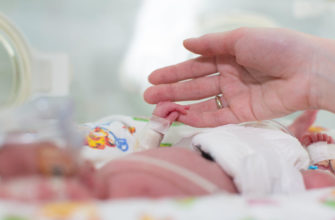
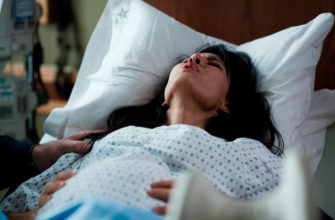

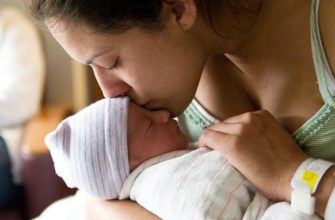


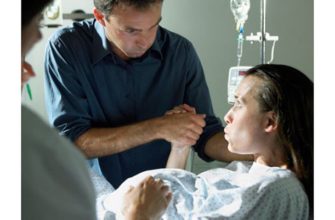

I gave birth to two children and always did not understand why in the maternity hospital they stimulate childbirth - they pierce a bubble, make stimulating injections. And then they also leave the woman in labor alone with her pains. True, it was a long time ago, maybe now something has changed for the better.
After reading this article I immediately remembered how I was tortured for 9 hours, and as a result, a cop. And amniotomy, and epidural, and secondary labor weakness, and milk came only after 1.5 weeks. The child has a subluxation, a long treatment, thank God now everything is fine, but the guilt that she did not give birth does not go anywhere and probably will not go away. Here it is an intervention.
I just have to do it, I hope everything goes well. I’m also thinking of using the umbilical cord blood freezing service in the Moscow Cryocenter. Cord blood stem cells are currently treating the most serious diseases - for example, cerebral palsy, oncology and traumatic brain injuries. And it costs not too much, health is more expensive.